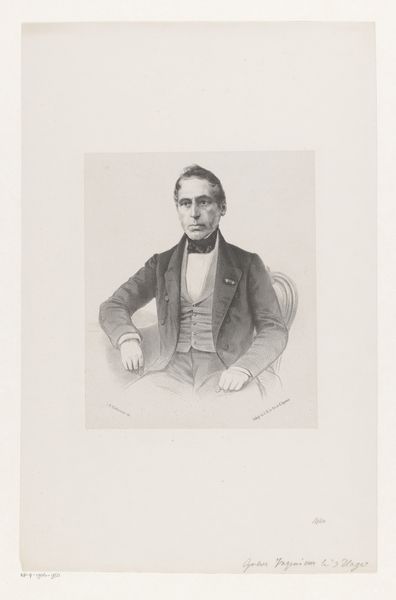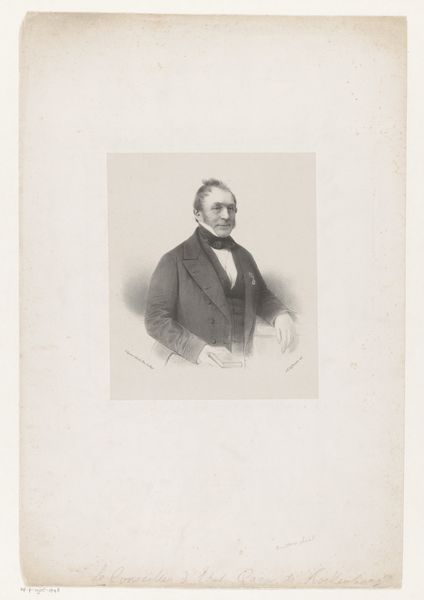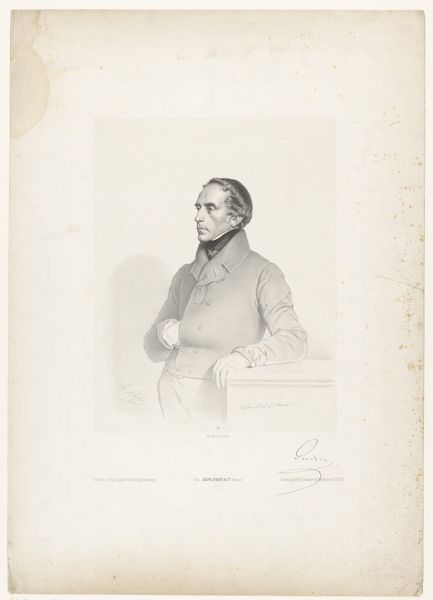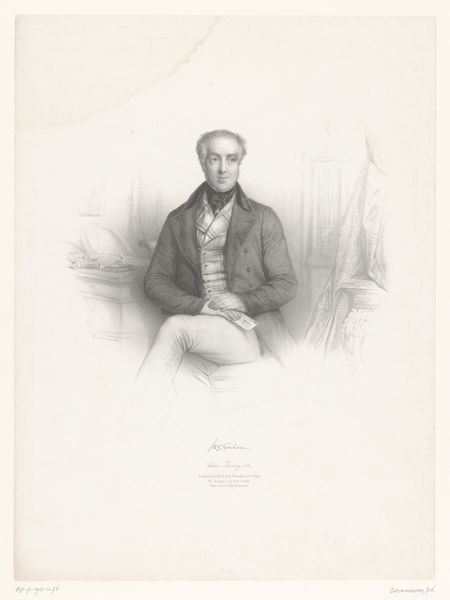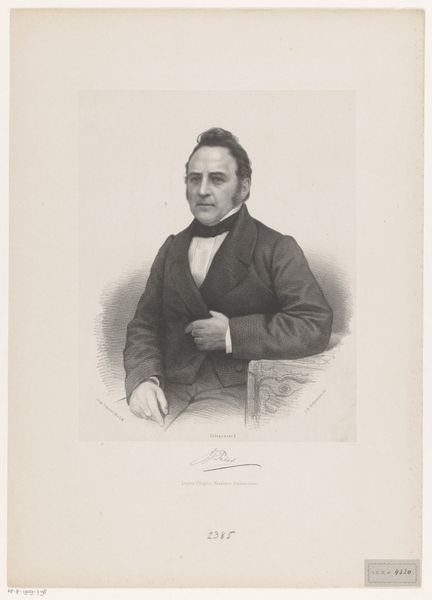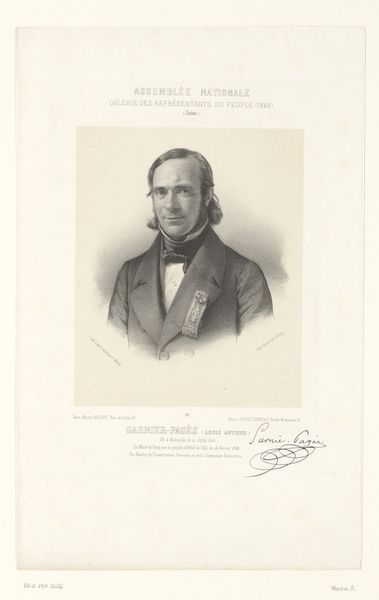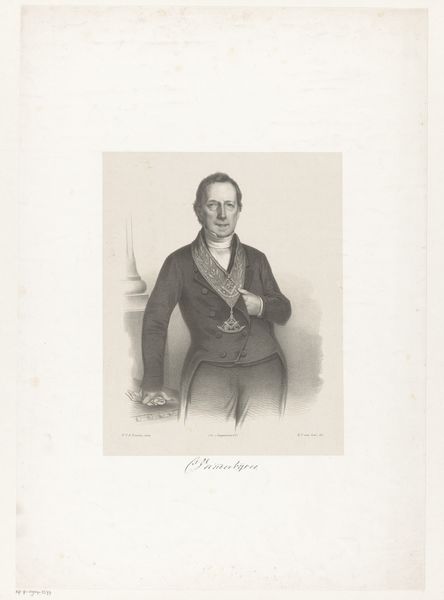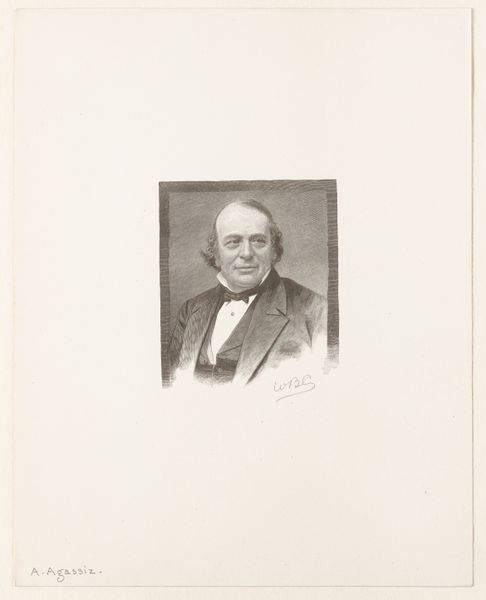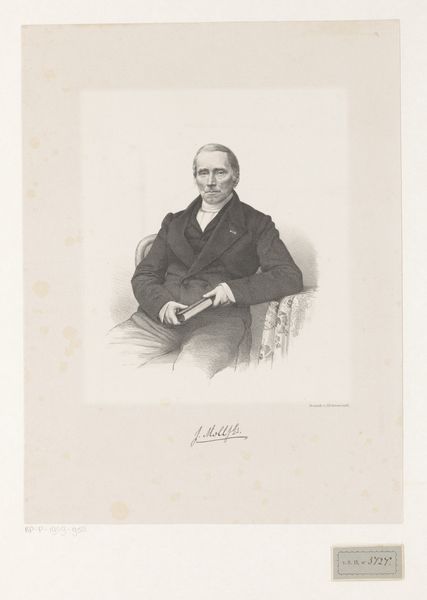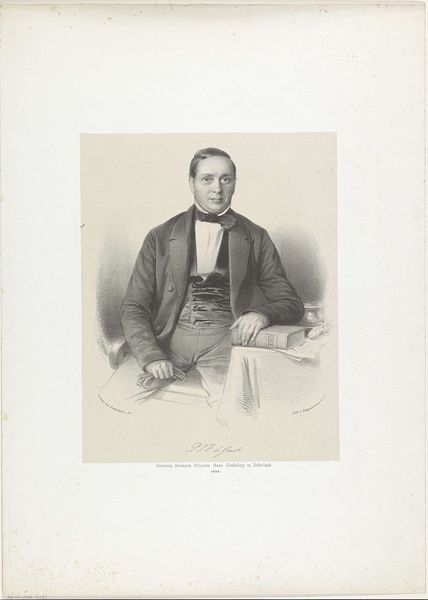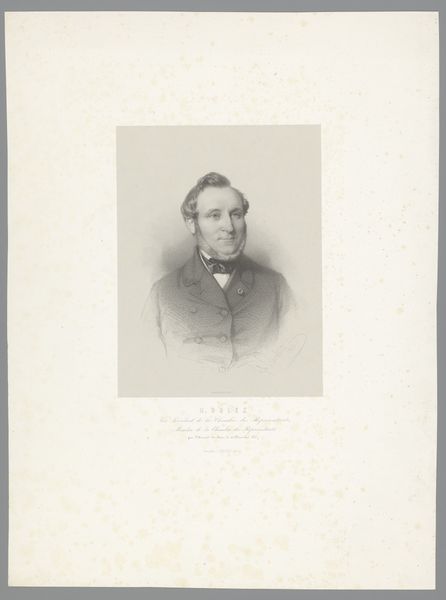
lithograph, print
#
portrait
#
lithograph
# print
#
pencil drawing
#
realism
Dimensions: height 322 mm, width 250 mm
Copyright: Rijks Museum: Open Domain
This is a portrait of Hendrik Tollens, made by Johan Hendrik Hoffmeister in the 19th century. It is a lithograph, a type of printmaking that relies on the resistance between grease and water. The process involves drawing an image with a greasy crayon on a flat stone or metal plate. The surface is then treated so that ink only adheres to the drawn areas. This creates a direct and velvety quality to the lines, allowing for a wide range of tonal variations. The process enables the image to be reproduced multiple times, which democratized image distribution in its time, making art more accessible to a wider audience. The lithograph medium allowed the artist to capture subtle details of Tollens's likeness, from the texture of his clothing to the expression on his face. The work reflects the growing intersection of art, industry, and commerce that shaped the era. Recognizing the significance of materials, making, and social context helps us understand the layered meanings of the artwork, challenging traditional distinctions between fine art and craft.
Comments
No comments
Be the first to comment and join the conversation on the ultimate creative platform.
